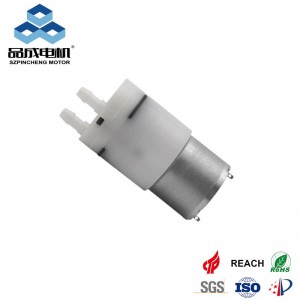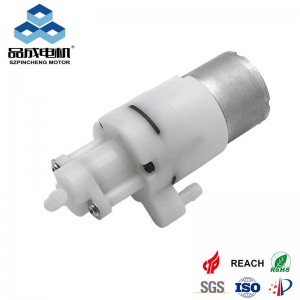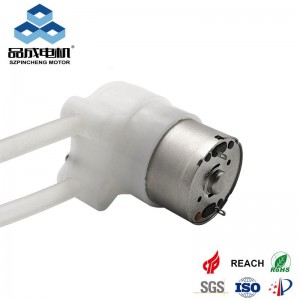Micro diaphragm pumps power critical applications from medical infusion systems to chemical analyzers. But their core component—the flexible diaphragm—faces inevitable wear. We analyze why diaphragms age, how to predict failure, and modern solutions to extend lifespan beyond 20,000 hours.
The Inevitable: Why Diaphragms Degrade
Diaphragms flex 50–100 times/second. Combined with chemical/thermal stress, this causes:
-
Material Fatigue:
-
Mechanism: Repeated bending creates micro-cracks (like bending a paperclip).
-
Accelerators: High frequency (>80 Hz), overpressure (>5 bar).
-
-
Chemical Attack:
-
Problem: Aggressive fluids (solvents, acids) swell or embrittle polymers.
-
Critical Example: EPDM rubber cracks in ozone-rich environments; PTFE resists chemicals but stiffens over time.
-
-
Thermal Aging:
-
Threshold: >80°C accelerates oxidation, reducing elasticity by 40–60%.
-
Result: Cracks cause leaks, pressure loss, or contamination – a top failure mode in industrial surveys.
Diaphragm Lifespan by Material
| Material | Max Temp | Chemical Resistance | Typical Lifespan | Vulnerabilities |
|---|---|---|---|---|
| PTFE | 150°C | Excellent (acids, solvents) | 15,000–20,000 hrs | Cold flow (creep under pressure) |
| FFKM | 230°C | Extreme (ketones, amines) | 10,000–15,000 hrs | UV degradation |
| EPDM | 120°C | Good (water, alkalis) | 8,000–12,000 hrs | Ozone/solvent attack |
| Silicone | 180°C | Moderate | 5,000–8,000 hrs | Tear propagation |
Data based on ASTM D638 tensile tests and real pump teardowns.
5 Signs Your Diaphragm is Nearing Failure
-
Flow Rate Drop: >10% decrease from baseline.
-
Pressure Fluctuations: Unstable vacuum/suction (e.g., ±8% error).
-
Visible Crazing: Web-like cracks on the diaphragm surface.
-
Increased Noise: Slapping sounds during strokes.
-
Fluid Contamination: Particles in output (from crumbling material).
Engineering Solutions to Delay Aging
1. Material Innovations
-
Reinforced PTFE: Glass fiber mesh reduces creep by 70% (e.g., Trelleborg Sealing Solutions).
-
Hybrid Elastomers: FFKM-silicone blends resist heat AND chemicals (Pinmotor’s DURAFLEX™ series).
2. Smart Design Tactics
-
Reduced Stroke Stress:
Curved diaphragms (vs. flat) cut bending strain by 50% (Patented in KNF NMP 830 series). -
Pressure Relief Valves:
Prevent overpressure spikes during blockages.
3. Predictive Maintenance
-
IoT Sensors:
Monitor flex cycles, temperature, and motor load to alert at 80% lifespan (e.g., Pinmotor’s SmartPump OS). -
Hardness Testing:
Shore A hardness increase >15% indicates embrittlement.
Real-World Lifespan Case Studies
| Application | Pump Model | Diaphragm | Avg. Lifespan |
|---|---|---|---|
| Lab Analyzer (Water) | KNF NF1.8 | EPDM | 14,200 hrs |
| Insulin Pump (Saline) | Pinmotor PD-12 | Nano-PTFE | 22,500 hrs |
| Chemical Dosing (IPA) | Tacsol TP-30 | FFKM | 18,000 hrs |
Key Insight: Fluid compatibility matters more than cycle count – IPA degrades EPDM 3x faster than water.
Proactive Maintenance Protocol
-
Inspect Annually: Check for cracks/stiffness (replace if hardness >70 Shore A).
-
Clean Regularly: Flush with compatible solvents to remove crystallized residues.
-
Avoid Dry Running: >5 mins without fluid increases temperature by 30°C.
-
Use OEM Kits: Generic diaphragms fail 40% earlier (Pinmotor’s matched kits include pre-calibrated valves).
The Future: Self-Healing Diaphragms?
Emerging technologies could revolutionize longevity:
-
Microcapsule-Embedded Polymers: Release healing agents when cracks form (Lab-stage, Fraunhofer IPT).
-
Graphene Coatings: Reduce friction and block UV/O₂ diffusion (Pinmotor R&D pipeline – 2025 release).
"A diaphragm’s lifespan isn’t fate—it’s a function of smart material selection and system design."
Extend Your Pump’s Life:
➔ Download Diaphragm Compatibility Guide
➔ Explore 20,000-hr Rated Pumps
you like also all
Post time: Jul-11-2025




